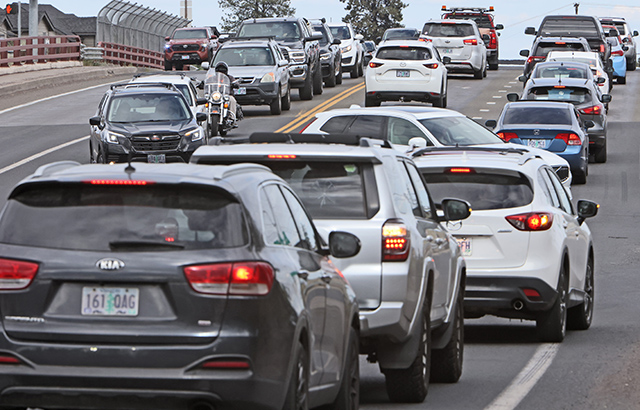Sisters brewery sees slow, steady growth
Published 12:00 am Tuesday, July 10, 2018

- (Ryan Brennecke/Bulletin photo)
With funky names like Knotty Blonde, Hoodoo Voodoo IPA and Stampede Ale, Three Creeks Brewing LLC in Sisters has carved out a niche for itself in the heady world of craft beer.
With $1.6 million in sales last year, Three Creeks can be found on shelves throughout Oregon and in Washington and parts of Idaho, said Wade Underwood, the general manager and a founder of the company. The company hopes to expand distribution into California.
Trending
“We’re trying to grow steady and in control,” said Underwood. “We’re trying to manage growth.”
That caution comes from having started a business at the height of the recession. The brewery opened in 2008 with a pub and 10-barrel brewing system. It was just three years ago that it expanded and opened a 30-barrel brewing facility and tasting room in a 10,000-square-foot building on Barclay Avenue in Sisters.
Three Creeks produces about 7,000 barrels a year.
Underwood talked to The Bulletin about the brewery. His responses have been edited for length and content.
Q: How did you start in craft beer?
A: I was into craft beer since I was young. I kind of chased it wherever I went. Old timers were making different beers and I was into trying them. I was into the brewpub scene the entire time, not knowing I’d end up in it. I grew up in Portland, wanted to get back close to family after living in Phoenix. I had already written a biz plan in Phoenix, but came here to start. I wanted to be in this industry. We started with a brewpub and tried to figure out what really made sense for the future while we considered what place we wanted.
Trending
Q: What are the challenges in the craft beer industry?
A: I think it’s being among so many brands. When we opened in 2008 we were the eighth brand in Central Oregon. Today there’s north of 30. Competition is heating up. And mind share with the distribution system is always a challenge. You have to have a distributor, and we need them to manage their business so they can take care of our brand and all those others they’ve made agreements with. The other challenge is creating and keeping relationships and maintaining the mind share with the buying public, the retail locations and the distributors. All of these have to come together to make high quality and good beer. You start here and then you need to build brand image and presence.
Q: Is making craft beer easy and fun?
A: It’s not an easy business. Not having been in the business it seemed like it would be easy and fun— you get to drink beer. The business is changing and how you go to market is changing.
We’re constantly re-evaluating, what are our beers; what we want to produce; when do we want to produce it; how we want to package it and what are the major buyers out there looking for. We try not to chase trends. But you still have to be relevant, and how you balance that with all of these things is a constant balancing act.
Q: What is your best-selling beer?
A: Hoodoo Voodoo is our flagship IPA that we started in 2009. Our Crowdpleaser, which has been out for about a year, is our No. 1 seller. It’s newer, more aromatic. It’s much softer drinking. It’s my go-to, my favorite. We make more than 40 different styles.
Q: How do you come up with ideas for new craft beers?
A: We keep an eye on the market and then talk among the team. We use the 10-barrel system at the pub. If we don’t like the beer, we’ll dump it out. We don’t put a beer product out there that we don’t believe in, if we won’t drink it ourselves. We are experimenting with juniper for the 2018 Oregon Brewers Festival in July. This one is the biggest out of the box that we’ve done in a long time. It’s an old-world way of making beer.
Q: What’s the future?
A: We have a flagship brewery. There are 4 million people a year who drive by it on the highway. It’s a great opportunity for us to show off what we can do. We have lots of beers for people to try. All of these beers are good. All these beers are clean. Having a flagship brewery is one thing and a competing pub. But if you go out there and put in 20 pubs out there, are you not competing with people you’re trying to sell beer to, or are you complementing them? I don’t know where that will end up. There’s some potential for some backlash there if you’re going production facility and pub. There’s still a lot of room in that small-town, community connection.
Reporter: 541-633-2117, sroig@bendbulletin.com








